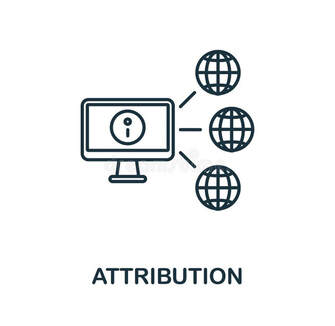 One of the problems that Indie authors have is trying to work out whether their social media marketing strategy is working for them. How does the author know if a sale has resulted from a random search on Amazon, what we call “organic traffic”, or if it has come from someone clicking on a link in a social media post or even from an advert posted somewhere like Google Ads?. This information is important for Indie authors. They spend a lot of time on social media, finding followers, building relationships, creating posts etc. They need to know if they are wasting their time, or if they need to invest more time on Platform A and less on Platform B.  The inbuilt metrics may tell them how many link clicks they are getting, but they won’t tell them how many of those clicks are being converted into sales and that conversion tells an important story. Some Indies go as far as paying for advertising on social media, or on sites such as Google Ads or on book promotions sites. How do they know if those adverts are actually resulting in sales? They may know how many clicks they are getting, but are those clicks earning them money – or just costing them money? This is vital information, because if clicks aren’t converting to sales, it means that there is something wrong with the sales page. It may be the cover image, it may be the blurb, it may be the free sample, or it may be the reviews – or lack of reviews. (BTW – this blog won’t help with diagnosing problems that are on the sales page. That is a whole different blog. Probably several blogs.) The KDP reports tell you how many sales or page reads you have had, but they don’t tell you where they came from. Connecting the different bits of information together to give you the whole picture isn't possible. So, wouldn’t it be wonderful if there was a way of tracking sales back to the place where the reader found out about your book? 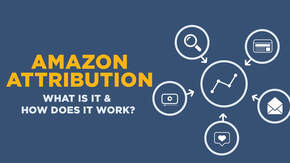 Well, there is. It’s called “Amazon attribution.” It’s FREE and it’s provided by Amazon itself, through Amazon Ads. Basically, what you do is create a unique link which allows Amazon to track the click back to its source. So, if the link is posted into Facebook and someone clicks on it there, then buys the book, the sale will be attributed to the Facebook post. Not only will this help you to identify where your sales originated, it will also tell you where you are getting your best results.  Did your best sales come from a Google Ad? Or did they come from a Facebook post? If it’s from a Facebook post then you might be better off not advertising on Google, but advertising on Facebook instead. Or on X, or Instagram or wherever you are getting your best results. This may also save you money, because you can now compare different platforms directly from which ones are selling your books. If you advertise on Amazon you will know if you get sales because the Amazon Ads data will show you. But what about Google Ads? From their metrics you will know if you got clicks, but you won’t know if those clicks turned into sales. With “Amazon attribution” that doubt is removed. Now, if you use a lot of sites for your marketing you will have to create a lot of attribution links. There is no point in using the same link on several sites because that doesn’t tell you which site is working best for you. You will need one link for Facebook, one for X, one for Instagram, one for Google etc. You can even use attribution links on your own website if you have one, to track sales that originate there, or to email shots and newsletters.  If you are running ads targeted at one particular country, say the USA, then you will need to make your link unique to Amazon.com sales. If you are targeting the UK as well, you will need a link for Amazon.co.uk. Etc. If you are selling on both, but you don’t know where your best sales are coming from, you may want to track sales in the two countries individually. So, you may have one link for Facebook post trying to get sales in the USA and a different link for Facebook posts aimed at the UK, even though you are using identical images and text to try to reach both countries. This could mean you creating a dozen or more links – but the information each link gives you will save you a lot of time and possibly a lot of money in the future as you will be able to make better decisions about your marketing strategy. Just to set your mind at rest, if you already have an Amazon Ads account then creating a link takes about a minute. If you haven’t got an account, it will take a bit longer because you have to set up the account first.  So, how do you get an “Amazon Attribution” link? The following instructions are aimed at use with a PC or laptop. I don’t suggest doing this on a phone or tablet because the screens will look different. I have created a short video (posted after the written instructions) which takes you through the process.. First of all, you need an Amazon Ads account. If you haven’t got one already, then you can create one direct from your KDP account. On your Bookshelf look to the right where it says “action”, click on the three dots. Find “promote and advertise” and click on it. Find “Run an ad campaign” and then locate the button marked “choose” and click on it. You will get a drop down list of all the Amazon marketplaces where you can advertise. If you are running campaigns aimed at different marketplaces and want to track each marketplace individually (recommended), you will need an ad account for each marketplace, though Amazon are planning to merge marketplaces for advertising in the near future, so by the time you read this that information may be out of date. I suggest you start with the country where you are based, or where you sell most of your books. For us that’s Amazon.co.uk but for you it may be somewhere different. Once you have selected your marketplace, you will get a new button displayed which says “Create an ad”. Click on that. You will then be taken through the usual pages needed to create an account if you don’t already have one, before you finally get to the “Ads Dashboard”. There is no need to create an actual Amazon Ad. They cost money. If you want to run Amazon ads that, again, is a whole different blog (which we have already published - look in our archive under “advertising”). On the left of your screen, you will see a vertical column of symbols which allow you to do various things. The only one you are interested in is the one that looks like a tiny bar chart. Click on that. You will get a new menu and you need to click on “Amazon Attribution.” This will open up a page which is headed “Measure Your non-Amazon Marketing Activities.” Below that is a button marked “Create Campaign”. You guessed it, click on that. This gives you two graphics, one of which says “Create manually” and the other doesn’t. Select the “Create manually” graphic by clicking on it and some boxes will appear below.. The first box asks you to name your campaign. Choose this name with care, because once you have created half a dozen of these campaigns you need to be able to tell which is which, eg which is Facebook and which is Google Ads, or whatever. Below that you will get a list of your books displayed. Scroll through the list and click on “add” to add that book to the attribution results. If you are marketing a stand-alone book, you need only select that book. If you are marketing a series, however, a customer may buy book 1 only, but they may buy other books in the series at the same time (whoop-whoop!). Or they may see the post for book 1, which reminds them that they read it and enjoyed it, and they may use that link to then go to your Amazon page and select Book 2 etc. So, for a series you probably want to select all the books in that series (and the box set if there is one). But, as a minimum, always track Book 1 because that is the series starter. If you have ebook, paperback and hardback formats you can select them all, or you may prefer to create an individual link for each format. That is your choice. We include all formats in the same campaign. Next you create your ad group. This basically provides Amazon Ads with all the information it needs to identify the source of the link when it is used, eg so it knows that it is coming from Facebook and not from Google. So, give the ad a unique name so that you can distinguish it later, when you come to analyse the results. In the “publisher” box select the platform you are using (Facebook, X, Google etc) from the drop down list provided. It is an extensive list and covers most social media and advertising platforms and some etail sites that allow links to be redirected to Amazon. You can also type in new publishers (sites) if the one you are using isn’t listed, eg your own website. If the platform you have chosen is social media, there is no deed to complete the next box. If it is something else, then there are other selections you may need to make. The “Click through URL” box is where you paste the link to the Amazon sales page for your book, in the version you wish to track. The quickest way to get to that is to go back to your KDP Bookshelf and click on “”View on Amazon” (make sure you select the version you wish to track) and then copy and paste the URL when you get to the Amazon page. Note: “View on Amazon” allows you to select any marketplace (territory) where the book is sold. So, make sure you select the marketplace you want to track. All you have to do now is look up to the top right hand corner of the page where you will see a button marked “create” and click on it. It takes a few moments for Amazon to create all the magic that is needed, but eventually you will be given a summary of your entry, along with an attribution URL. That URL is very long, but it is the one you then copy and paste into whatever activity you want to monitor. For example, if you want to monitor a Facebook post, you paste it into the Facebook post instead of the link you would normally use. Here's the video demonstration we promised. Using Facebook as an example, if anyone clicks on the link to go to your Amazon page the click will be recorded by Amazon and if they then buy your book the sale or download KENP (KindleUnlimited pages) this will also be recorded. From the name you gave the attribution link, you then know which post got you your sale. You view your results using the same “Amazon Attribution” selection in Amazon Ads, by clicking on the “Ad Groups” option instead of “Campaigns”. You can also track different channels (Facebook, Google etc) by clicking on the “Channels/Publishers” option, and you can access your links on the “Attribution tags” option if you want to copy them again for use in a new post.  When it comes to reviewing the results, Amazon are providing you with a free service, so they don’t rush to collate them. It can take several days for some results to appear. You will start to see your link clicks and KENP (Kindle page reads) the day after you post the link. However, in most cases the sales results may not be visible until around Day 7 or even later, An enhancement of the use of attribution links is if you want to try out different posts on the same platform. For example, if you want to see which images work best for your posts, which text attracts more clicks etc, you can create a unique attribution link for each version and then view your results to decide which is getting you the best results. That means you are working less in the dark and taking a lot of the “error” out of trial and error. So, if you are getting sales on Amazon but have no idea where they are coming from, you now know how to track them using “Amazon Attribution”. If you have enjoyed this blog, or found it informative, then make sure you don’t miss future editions. Just click on the button below to sign up for our newsletter. We’ll even send you a free ebook for doing so.
0 Comments
 I read a post in a writer’s group on Facebook recently that bemoaned the fact that so much of the advice that was posted there was contradictory. It was ironic that this post was being made on social media, because all human life is there in its multitudinous forms. Advice spans the gamut from barking mad to the blatantly obvious (or is it that obvious?). Some of the “advice” being offered may in fact be mischievous in its nature, deliberately trying to mislead in order to provide some form of amusement for the person posting it. But the bottom line is that most of the advice offered on social media is actually opinion and is therefore subjective in its nature. While people try to turn it into a truism, it often doesn’t work for everyone. 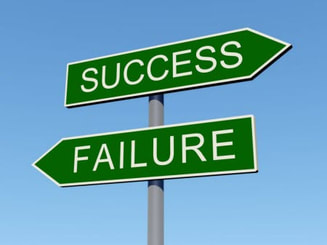 The first point I must make is that what works for one author doesn’t necessarily work for another. We, for example, have had considerable success selling books using Amazon Ads. However, we know of many authors and small publishers who have been far less successful. There will be underlying reasons for that. A good book is a good book and advertising should be able to sell it. But there may be reasons why buyers aren’t buying the book that have nothing to do with its quality. But the simple fact is that where we find success with advertising, some authors don’t, so any advice we offer relating to our use of advertising is going to be coloured by our experiences, as is theirs. 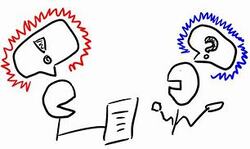 Similar lessons apply to the writing advice offered to authors on the same group. It is quite common for authors to post extracts of their WIP and ask for comments. Some authors respond like cheerleaders, whooping with encouragement for the work. That’s fine. We all need encouragement from time to time. But it’s only fine up to a point. Other authors are more critical. Very often their comments get attacked by the cheerleaders for failing to be encouraging. But if someone is making obvious blunders in their writing, isn’t it better for them to be told so that they can correct the mistakes before it’s too late? We here at Selfishgenie Publishing are great believers in supporting writers, especially Indies. But gaining quality feedback is an essential part of the growth of a writer. 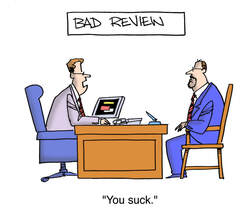 “Life long learning” and professional development are well established processes in many companies, because most employers understand that it is better to develop the skills of existing employees than it is to sack them and recruit someone new. But many authors don’t have anyone to help them to develop, except for other authors and the channel by which many authors are provided with that development help is social media. If we just act as cheerleaders, then it may boost the spirits of the author who asked for the critique, but it won’t do a thing for their development as a writer. OK, perhaps we have to be careful how we word things. “You suck” may be an accurate reflection of the quality of the writing but it doesn’t help the author any more than the cheerleading helps them. But to get back to my original point that most opinions or advice are subjective. So how does the author know which advice to listen to and which to ignore? 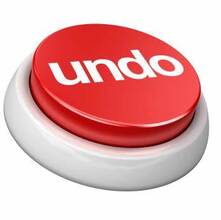 You can’t. If you could, you probably wouldn’t need to seek the advice anyway, because what is being offered is so blindingly obvious. But in writing we always have an escape route. Nothing that is done can’t be undone. We are not building the Titanic, so the mistakes involved in design and construction won’t result in the ship sinking. If we make a mistake, we can go back and rectify it. Even if we get as far as publishing a book, we can always “unpublish” if we only get negative reviews. It should always be remembered that we learn more from our mistakes than we do from our successes. Even if the only thing we learn is not to ask for advice about writing on social media!  But I do think that social media is a valuable resource for writers who want support and advice. So, what if the advice is contradictory? What can we do about it? We can exercise judgement. For a start, what is the majority view? I’m not going to suggest that majorities are always right (just look at election results), but it is more likely that a majority view will reflect what people have found to be successful rather than unsuccessful. Secondly, you can put the bits of contradictory advice side by side and weigh them in the balance. Intuitively, which sounds as though it might be right? We can go back to the person who offered the advice and ask them to give us a real life example of the advice working. What they provide (if anything) should tip the scales one way or the other. 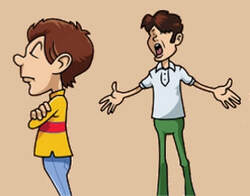 Thirdly, what are the consequences of making the wrong choice? Will you just be wasting a bit of time to put things back as they were? Or will it involve a loss of money because a bad decision was made? I would worry far more about decisions involving money than I would about decisions that only involved time – and I regard my time as being precious. Finally, you can actually ignore all the advice that has been offered and go with your gut instincts. Let’s face it, we make far more decisions based on that during our lives than we ever do after taking advice and look how well that turns out. When it comes to writing there are actually very few rules. When it comes to marketing the finished book there are things that work and things that don’t, and you can learn which work the best. There is definitely no substitute for learning when it comes to marketing, so don’t seek marketing advice on social media, seek it from a recognised training provider.  A lot of marketing advice is genre specific. If you write for YA audiences, you need to be thinking in terms of where young people are most likely to see your marketing messages. If your books are aimed at older audiences, you need to think about where they are going to see your marketing messages. The two places are likely to be very different. So, when you see advice that says “Doing this (whatever “this” is) really helped my book sales” you have to consider why it was successful for them and make an objective judgement about whether it will also be successful for you.  And if you want to learn how to market properly there are lots of blogs and tutorials available on-line on a wide range of subjects, but you have to do a bit of research to find them and then spend time reading/watching them. Social media may provide you with a short cut, but it is never an adequate substitute for proper research. But research takes time. But so does correcting mistakes. When I worked in business I was always amazed by how many people never had time to do the job right first time, but they always had the time to do it again when it went wrong. You can do things once correctly or you can waste time by having to re-do them. Which do you think following advice on social media is most likely to result in? If you have enjoyed this blog, or found it informative, then make sure you don’t miss future editions. Just click on the button below to sign up for our newsletter. We’ll even send you a free ebook for doing so. Disclaimer: No financial incentives were sought or offered for this book review. The reviewer purchased their copy of the book. The opinions expressed in this review are those of the reviewer and not necessarily those of Selfishgenie Publishing. 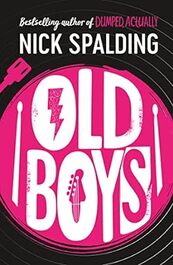 It occurred to me over the Christmas period that I had rather neglected my reading of Nick Spalding’s books. Nick Spalding is the sort of author you read when you just want to relax and forget about the cares of the world. Instead, you become immersed in someone else’s problems for a while. These aren’t the great problems of the world. There are no epic quests, no fights against dragons, whether real or metaphorical. There may be some fights against metaphorical demons, but they threaten the individual, not the world as a whole. In other words, you don’t need to keep looking out of the window to assess how close the world’s problems are getting. The problems Spalding’s characters face are the sorts of things we may all face in our lives at some point. Sometimes they are 21st century issues, created by our modern world and modern lifestyles, but often they are timeless. So it is with “Old Boys” which is the book I review here. As with all Nick Spalding books, it is written in a light-hearted style. Because this book deals with quite deep emotions, there are darker moments, but generally speaking it is what you might call a gentle comedy. It isn’t meant to keep you either laughing out loud or wide awake at night for fear of what might lurk beneath the bed. But it may make you stop and think a little bit about your own life and the choices you have made. And there is nothing wrong with that. The story is a familiar one. Will Fairweather is feeling depressed after the loss of his mother. It may have been 4 years earlier, but it is still hurting him deeply and affecting the way he lives his life. Frustrated by this his younger wife, Audrey, asks that they separate for a while to give Will a chance to sort himself out. It felt a little heartless to me, which is why I have only given this book 4 stars. I’m not sure that extreme action like that would be the first thing a loving spouse would suggest when their marriage is in trouble, but I guess it was necessary for the rest of the plot to work. There is another reason for only giving the book 4 stars and it is that at several points I felt like giving Will a good slap, because his wallowing in his grief is self-indulgent in the extreme. Perhaps that was why Audrey asked him to move out, as a way of giving him a metaphorical slap. Anyway, needing somewhere to go, Will ends up moving in with his estranged father, who has had no contact with Will for more than 3 decades. Will’s father, Red Fairweather, is the drummer with a prog rock band by the name of Holy Moly who were big in the 70s and 80s, though they are pretty much retired at the time of this story. Those readers who remember the likes of Keith Moon and John Bonham will be familiar with the stereotype drummer that Nick Spalding creates for Red. Spalding even points out the similarities. Several well known rock bands of that era and later are given name checks in the book, though they play only a peripheral part in the actual plot. I suspect that Nick Spalding may be a fan. I think it is safe to say that Red Fairweather doesn’t so much need a family as a combined nanny and psychiatric nurse. He takes it upon himself to try to help Will mend his marriage by “bringing him out of himself” through a series of bizarre adventures. As Red is now in his 70s the scale and danger of these activities is limited, but they are still enough to scare the highly risk averse Will before he has even tried them out. The book progresses along this amiable path, but things take a much more emotional turn in the second half. Here the home truths start to emerge, the family history, the cause of Red’s break up with Will’s mother and a whole lot more. Keep a box of tissues handy because you will need them. There is an underlying message in the book if you care to listen to it. I won’t reveal what it said to me, but it is a strong one and one which, perhaps, we should all remind ourselves of from time to time. If you have planned your summer holidays for this year this is exactly the sort of book you might like to take along to read by the swimming pool. It may not be high drama, but it will leave you with things to think about. You can find out more about “Old Boys” by Nick Spalding by clicking this link or the book’s cover image. If you have enjoyed this blog, or found it informative, then make sure you don’t miss future editions. Just click on the button below to sign up for our newsletter. We’ll even send you a free ebook for doing so. This week we hand our blog over to our most prolific author, Robert Cubitt. Disclaimer: The views expressed in this blog are those of the blog's author and are not necessarily those of Selfishgenie Publishing. 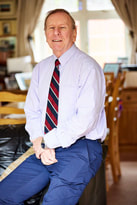 Author Robert Cubitt Author Robert Cubitt Authors get asked a lot of questions. Some of them sensible and others not so. Having been given the freedom of this blog I’d like to answer some of the sensible ones from my own perspective. One of the most common questions an author gets is “How did you get into writing?”. Well, it goes back all the way to my childhood. I loved reading. My local library, when I was about 13, would only allow me to take out one book at a time, but on at least one occasion I visited 3 times in one day because I read my single book so quickly. It was a 4 mile roundtrip and I had to walk, which says a lot about my reading addiction. It was only later that I worked out that it would have been a lot more efficient for me to sit in the library to read my book, which says a lot about my ability to think logically at the age of 13. 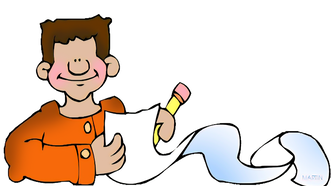 At the same time, I loved essay writing at school. “What I did on my holidays” (and other such topics) gave me the opportunity to create all sorts of adventures. I was once punished for writing a less than true account of whatever the teacher had asked us to write about that day and my mother went to the school and protested on the grounds that they were stifling my creativity. The objective, she pointed out, was to produce a piece of well written work, not to provide evidence for use at a trial. My mother’s intervention made no difference. For future assignments I was warned not to stray from the truth. What I actually did was tone down the drama in my fiction to make it more believable. Perhaps my first lesson in plot creation! I made my first attempt to write an actual book when I was about 14. I had no idea what I was doing, of course. My characters were shallow, and the plot made no sense. But everything we do provides us with lessons and the lesson I learnt from that was that writing a novel wasn’t as easy as I had imagined. But it didn’t put me off writing. 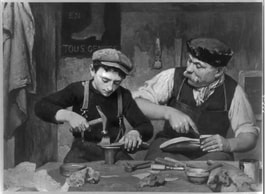 An apprenticeship in some arcane craft. An apprenticeship in some arcane craft. The school I went to when I was between the ages of 14 and 16 wasn’t the sort of school that produced writers. Pupils were expected to “learn a trade”. It was an all-boys school which meant apprenticeships in some arcane craft, motor mechanics, the building trade and so on. I assume that at the girls’ school across the road they were being taught to type, to cook and to raise babies. Our horizons weren’t even stretched as far as working in an office, at least, not without staying on for 6th form, which the families of most of the boys couldn’t afford for them to do. Regardless of academic ability. the vast majority left school at 16 to start earning a living so they could contribute financially at home.  So that’s what I did. However, having been raised on the works of Captain W. E. Johns, author of the “Biggles” books, I decided to learn my trade in the RAF. But I didn’t stop writing. Almost every RAF station I served on had a station magazine and they were always looking for “content”, as we would call it today. I was happy to oblige them, though not everything I wrote was published. Apparently, parodying the domestic lives of the senior officers is frowned upon. Who knew? At the end of my 23 year stint, I suddenly found myself unemployed. I threw my efforts into finding a job, of course, but we were in a recession at the time and job hunting was an uphill struggle. To preserve my sanity in that dark time I decided to have another go at writing a book. 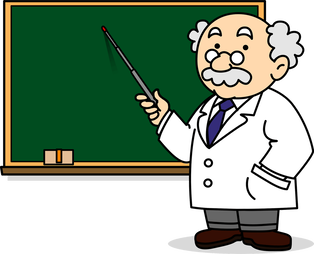 Learn from the best. Learn from the best. Having, to a certain extent, honed my skills in writing for magazines, what I produced was far better. I won’t go as far as to say it was good, as evidenced by the fact that I have never attempted to get the book published. But it was a start. It also served its purpose in keeping my mind occupied. More than that, it was a learning exercise. The most important lesson I learnt was that it is the characters who must take centre stage. A plot without good actors will never work. Instead of reading for pleasure, I started to read to learn how to write. Firstly, I read the books of successful novelists and analysed them to discover why they were so good. It always came down to the characters. The plots could be laughable in the way they were contrived, but having good characters, ones I came to care about, meant that the clunky plot was ignored, and I enjoyed what I was reading because of my emotional engagement with the characters. It was probably the most valuable lesson in writing I have ever learnt.  I eventually got another job and 17 years later switched jobs again. That final job was actually 20 hours of work squeezed into a 35 hour week, so I had a lot of time on my hands. I used the extra time to start writing again. I spent so much time writing that on one of my performance reviews my boss commented on how busy I always was, constantly beavering away. Little did he know! (BTW, I always did my real job first and to the best of my ability and was commended for my achievements). But the writing spark had turned into a forest fire, and I wasn’t dishonest enough to keep allowing my employers to continue paying me to be writer, so I took early retirement and started writing full time. Here I am, 12 years later and with 31 books published (including non-fiction) and I’m still writing like there’s no tomorrow. 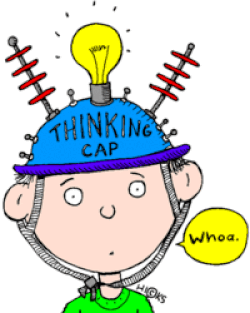 The next question I would like to answer is “where do you get your ideas from?” Well, they are all around us, all the time. Let’s start with world news. Every bulletin has the potential to produce ideas that can be turned into a book. All human life is there, in graphic detail. The politics, the hardship, the heartache, the trauma, the drama and blessedly, sometimes, the humour. Turn on the TV or radio news, pick up a printed newspaper or go onto the internet and there are myriad news stories just waiting to be fictionalised. Real authors can spot those and turn them into a full length novel.  History is a great source of ideas for stories. So many kings, queens, politicians, rogues, heroes, vagabonds, explorers, adventurers etc. Each has their own story and those can be borrowed and turned into fiction. I’m a great fan of this genre myself. Then there is everyday life. Some people call it “people watching”, but the world around us can provide the author with a thousand stories if they have the imagination. A young woman running for a bus, almost losing a shoe, can provide a hundred questions as to how she came to be there and what may become of her. If the author can imagine good answers, they can turn them into a book. Finally, there are our own “lived” experiences. Life rarely runs smoothly for anyone, and the speed bumps and car crashes all provide us with stories we can tell. In reality we do tell them, to friends and family, or maybe to our therapists. All an author does is write the same stories down and pad them out to a length that will make them a book rather than an anecdote. Of course, they have to be amplified to make them more dramatic/romantic/funny but that comes down, once again, to imagination.  What about sci-fi and fantasy? They don’t come from day to day life. Wrong. For the most part, sci-fi and fantasy novels are made up of the same plots as the stories we set on Earth. They just have bits added on to make them appear different. Star Wars, for example, is just the story of good vs evil transported to a galaxy far, far away. All the author does is to use their imagination to create worlds where the stories can be told, as they do with fantasy. “Luke, I am your father” is a trope that can be found in many an Earthbound story, as can the twins separated at birth. Shakespeare’s “Comedy Of Errors” and “Twelfth Night” both use the basic separated twins trope. The final question I want to answer is “Is it difficult to become a writer?”  If writing is ever this boring, you aren't a writer. If writing is ever this boring, you aren't a writer. My answer would be “no”. But there are many caveats to that. Anything you enjoy doing is never a chore. I enjoy writing, so I don’t find it difficult. If someone sits down and starts to write and they have become bored after a couple of thousand words, they will never become a writer. Not because they can’t write well, but because they clearly don’t enjoy writing. The more you study and practice a subject, the easier it gets. That is what I have done as a writer. But I find chess hard. Chess Grandmasters will tell you that playing chess is easy and for them it is. Because they have practiced for thousands of hours playing hundreds of thousands of games to get to where they are. Of course it’s easy for them. I play one game every ten years, so for me it’s always going to be hard. So it is with writing. The more you learn and the more you practice what you have learnt, the easier it gets. If your idea of writing is doing the weekly shopping list, you will struggle if you start to write a book. 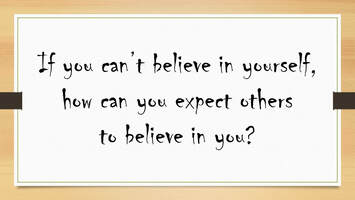 Finally, you have to believe you can write. Like many other creative professions, authors are plagued by insecurities. Imposter Syndrome stalks us like a hungry tiger. It sucks all the enjoyment out of writing which, as previously mentioned, is an essential part of being a writer. Overcoming that barrier of lack of self-belief has curtailed many a potentially successful writing career. So, when the whispers of self-doubt start to be heard in your brain, you have to shout back very loudly “I am a writer!” I shout it out loud, which is very disturbing for my wife. But if I didn’t, I would have given up 31 books ago. So don’t give up. Most authors take years to become an overnight success. Some never will become a success, but that doesn’t spoil their enjoyment of writing. To find out more about my books, see the "Books" page of this website. If you have enjoyed this blog, or found it informative, then make sure you don’t miss future editions. Just click on the button below to sign up for our newsletter. We’ll even send you a free ebook for doing so. 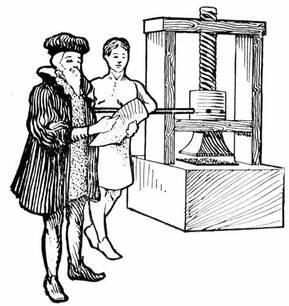 Is the game up for traditional publishers? I’m not talking about today or tomorrow. What I’m talking about may take years to come to fruition, but the publishing world is changing, and the trad publishers don’t seem to have cottoned on to the fact yet. Between themselves and agents, they have made it almost impossible to access mainstream publishing. The gate keepers are no longer just keeping the gate, they are building high walls and digging moats so deep in front of the gate that no one can get in. 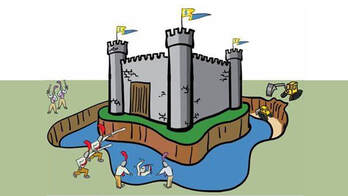 Which is why not only is the publishing model changing shape, it has no choice but to change shape. But the trad publishers are sticking their fingers in their ears and singing “la, la, la”. With so many authors now taking the self-publishing route, it is becoming the norm rather than the exception. According to this article, 300 million self-published books are sold each year. That’s 30-35% of the publishing market. While the global publishing market is expected to grow by 1% per year, the self-publishing market is expected to grow by 17% per year. 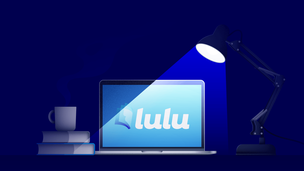 Prior to 1998, the only way to self-publish was to pay a printer to print your books, then hawk them around local book shops trying to find one to stock it for you. But in 1998 Chip Wilson, a millionaire entrepreneur, created a self-publishing website called Lulu and that all changed. Now anyone could publish their book on-line and sell it through the platform. Imitators followed and, of course, the retail giant Amazon established their own platform, Kindle Direct Publishing (KDP), which now dominates the self-publishing market. So, from almost nowhere in 1998, self-publishing now holds approximately 34% of the market – and growing. I’m not going to say that the quality of the books is 100% great, but there are plenty of good self-published authors and many make a respectable living from their writing. In fact, some make a better living than authors who are trad published. There are at least 7 self-published authors achieving 7 digit income levels and many more making 6 digit levels. 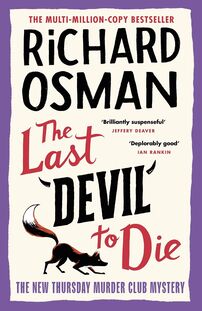 Which is one of the reasons I think there will be further shifts in the industry. A trad published author receives about 10% of the sale price of their book in royalties. From that they then have to pay their agent (actually the agent usually gets the royalty cheque, deducts their commission and then passes the rest to the author). Richard Osman’s latest best-seller is priced at £11.99 for the Kindle edition and £9.99 for the paperback at the time of writing this blog. Don’t ask me why the paperback is cheaper because I don’t know, but it probably started out being more expensive. Based on current publishing practice Richard will receive around £1.19 in royalties for the Kindle edition and around 99p for each paperback sale. If he were to self-publish and sell his book at the same price, he would make either £3.60 or £8.39 per copy, depending on whether he took the 30% or 70% royalty option. If I were Richard, I’d be starting to wonder about the wisdom of sticking with trad publishing. 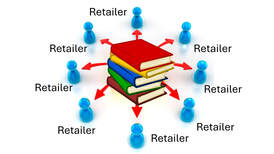 As a big name author, he would have no problem setting up distribution deals with all the major retailers, without having to rely on his publisher to do that for him. The rest is down to editing, cover design and marketing and he could hire people to do that for him. I think he’d still end up with more money in his pocket than he does now. For a start, he wouldn’t have to give between 10% and 20% of his royalties to an agent. I suspect that a lot of trad published authors will do these sort of sums in future and when their existing publishing deals come to an end, they’ll self-publish the next book they write. 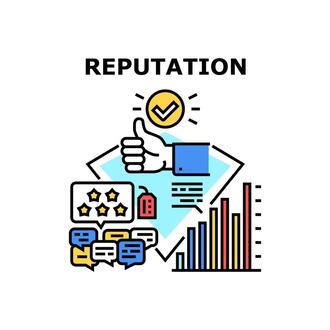 It is noticeable that publishers are now trying to tie authors into multi-book contracts in order to prevent that sort of desertion, though at the moment they are more worried about their authors being poached by other trad publishers than they are about their authors opting to self-publish. The more top quality authors who go down the self-publishing route, the better the reputation self-publishing will gain. I strongly suspect that the much of prejudice against self-published authors is being fuelled by trad publishers trying to protect their businesses.  Change sometimes happen at a glacial speed. But change can also function more like a snowball rolling down a hill, getting bigger and bigger and going faster and faster. I may not be around for long enough to see which metaphor is more accurate, but many of you will be. But I predict that one day, when a new author announces on social media that they are about to start querying their novel, the response from other writers won’t be “Good luck”, it will be “Why on Earth are you bothering with that?" If you have enjoyed this blog, or found it informative, then make sure you don’t miss future editions. Just click on the button below to sign up for our newsletter. We’ll even send you a free ebook for doing so. |
AuthorThis blog is compiled and curated by the Selfishgenie publishing team. Archives
June 2025
|

 RSS Feed
RSS Feed